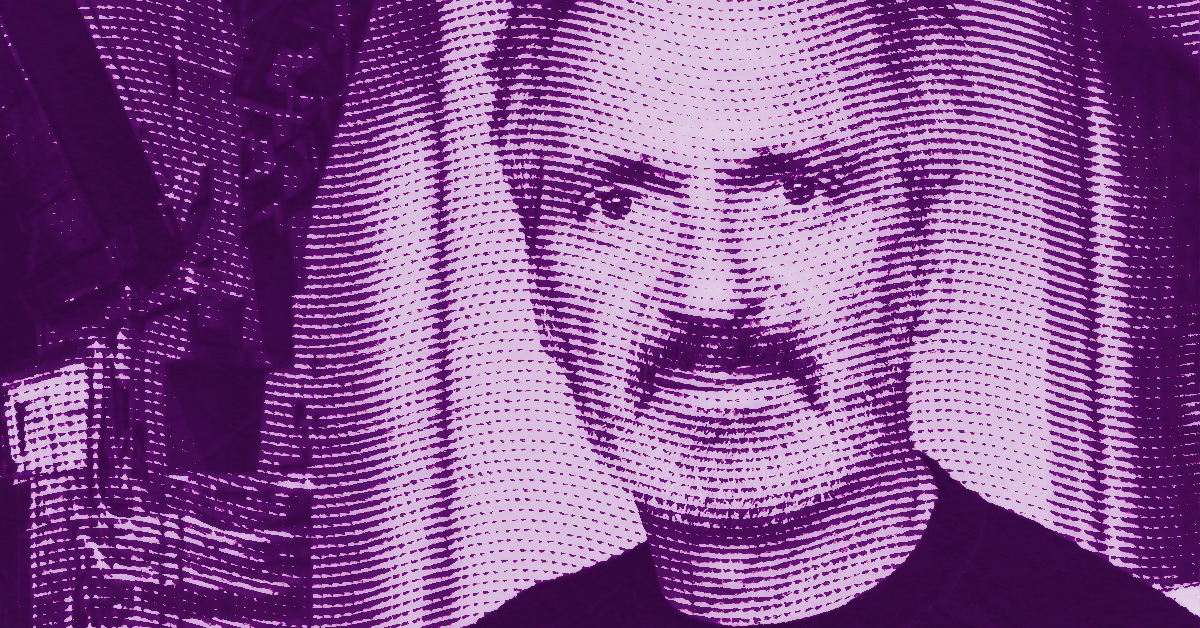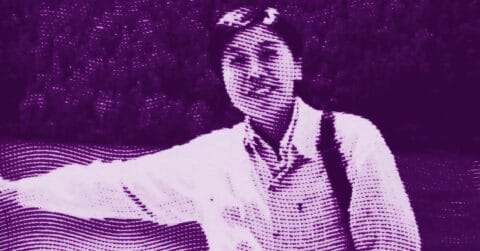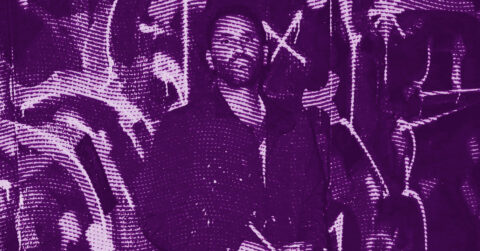Listen to me carefully, you bunch of snobs, Thomas Struth is neither the cold chronicler that some claim to see nor the simple heir of the Bechers that people stubbornly describe. This seventy-one-year-old man has been offering us, for nearly five decades, a body of work with relentless coherence, built like a cathedral of the contemporary image where each series dialogues with the others according to a logic as rigorous as a philosophical system. His camera becomes the instrument of a permanent investigation into the structures organizing our collective existence, from the deserted streets of Düsseldorf to the laboratories of CERN, passing through those unsettling family portraits and museum scenes where the eternal theater of the gaze is played out.
Urban investigation
From the late 1970s, Struth developed a photographic approach that breaks with the documentary conventions of his time. His urban black-and-white photographs reveal less the visible surface of cities than their deep structure, that hidden geometry that organizes our movements and meetings. In Düsselstrasse, Düsseldorf (1979), the artist does not just document an urban landscape: he reveals the temporal layering of a society, those layers of successive intentions accumulated in public space like geological strata bearing witness to the Earth’s long time.
This method finds a particular resonance with the work of Robert Musil [1], the Austrian writer who described the modern man as shaped by “the counterformations of what he has created.” In The Man Without Qualities, Musil observed that “the street walls radiate ideologies,” a phrase that seems written for Struth’s urban photographs. The German artist precisely captures these ideological radiations in his frontal frames and central perspectives. Every facade, every window, every trace of wear tells the story of a collective decision, an architectural choice, a pragmatic adaptation to the constraints of reality.
According to Struth, the city becomes a gigantic testimony where the intentions of multiple historical actors overlap. Architects, urban planners, inhabitants, shopkeepers, public authorities: all have left their mark on these spaces that the lens reveals as “unconscious places” where power relations of an era crystallize. This approach goes far beyond a simple sociological observation to achieve a true archaeology of the present, where every architectural detail testifies to the tensions affecting the social body.
The systematic absence of human figures in these images reinforces their investigative dimension on structures rather than individuals. Struth invites us to understand how the built environment conditions our behaviors, our movements, our possibilities for encounter or isolation. These empty streets are not depopulated: they are saturated with the ghostly presence of all those who have walked, transformed, and inhabited them. The photographer thus reveals the deeply political dimension of urban space, this capacity of the architectural framework to guide our gestures and thoughts according to logics that surpass us.
Family portraits
The shift towards family photography marks a decisive turning point in Struth’s work. These portraits, begun in the 1980s in collaboration with the psychoanalyst Ingo Hartmann, explore the mechanisms through which elementary social structures are transmitted. Far from bourgeois portrait conventions, these images reveal the complexity of contemporary family dynamics, those subtle plays of proximity and distance that organize relationships between generations.
The reference to the theories of Jacques Lacan [2] is essential here to grasp the full meaning of these compositions. The French psychoanalyst showed how the family constitutes the first place of symbolic structuring of the individual, this space where the relationship to authority, to sexual difference, to intergenerational transmission is tied. Struth’s portraits precisely reveal these mechanisms at work in the spatial organization of bodies, the distribution of gazes, the gestures that betray the unconscious stakes of each family configuration.
In The Richter Family (1989), for example, the arrangement of the characters reveals much more than a simple aesthetic composition: it maps the power relations, the tacit alliances, the emotional distances that structure this social microcosm. The presence of the son in the father’s arms, the maintained distance with the wife, the placement of objects in the domestic space: every detail participates in a relational grammar that Struth’s lens deciphers with clinical precision.
These images function like “primitive scenes” in the sense Lacan intended, those founding moments where the psychic organization of the subject crystallizes. By photographing his relatives and their families, Struth never indulges in complicit intimacy: he maintains an analytical distance that allows grasping the universal mechanisms at work in these singular configurations. His portraits reveal how each family reproduces, adapts, or subverts the relational models inherited from collective history.
The photographic technique itself takes part in this psychoanalytic approach. The relatively long exposure times, the necessity to maintain a static position, the shared waiting before the lens: all these elements create an artificial situation that reveals tensions usually masked by the fluidity of daily interactions. Struth thus transforms the photographic act into a revealing device, capable of bringing to the surface the unconscious structures that organize family ties.
The artist carefully avoids the pitfall of voyeurism by maintaining his models in their dignity. These families pose with gravity, aware of participating in an undertaking that exceeds them. They become representatives of broader social configurations, allowing the viewer to recognize in these unknown faces something of the mechanisms organizing their own family history. This universalization of the particular constitutes one of the major aesthetic stakes of this series, which transforms personal anecdote into anthropological revelation.
Museum photographs
The series of museum photographs, developed since the late 1980s, may represent the most accomplished fulfillment of Struth’s approach. These images, showing visitors contemplating works of art, stage the complexity of contemporary aesthetic experience while questioning the conditions of possibility of the artistic gaze in our image-saturated era.
Art Institute of Chicago II (1990) is a perfect example of this approach. A woman with a stroller stands in front of Rue de Paris, temps de pluie by Gustave Caillebotte. Her contemporary silhouette echoes the figures in the Impressionist painting, creating a striking temporal dialogue between two eras of urban modernity. Struth thus reveals how art from the past continues to illuminate our present, but also how our contemporary gaze retroactively transforms the meaning of ancient works.
These photographs operate according to a vertiginous mise en abyme logic: we see people looking at works that depict other people looking at the world. This multiplication of levels of gaze reveals the fundamentally reflexive dimension of artistic experience. Struth does not merely document museum attendance: he questions the mechanisms by which our collective relationship to art and history is constituted.
The influence of Hans Belting’s thought on this series deserves to be highlighted. The German art historian showed how images function as “labyrinths” where our attempts at rational mastery of the visible are lost. Struth’s photographs update this intuition by revealing the complexity of perceptual processes at work in artistic contemplation. Each visitor brings their history, references, expectations, creating an interpretative polyphony that the photographer’s lens manages to capture in its collective dynamic.
The spatial organization of these images also reveals an in-depth reflection on the political stakes of cultural dissemination. These crowds of tourists pressing in front of La Joconde or Raphael’s frescoes testify to the democratization of access to art, but also to its transformation into a spectacle of consumption. Struth carefully avoids the trap of easy denunciation: his images instead reveal the persistence of aesthetic desire at the very heart of this attention economy that characterizes our era.
Nature and Politics: The Technological Investigation
The Nature and Politics series (2008-2015) marks a new stage in the evolution of Struth’s work. These photographs of scientific laboratories and technological installations reveal the backstage of our technical civilization, those usually invisible places where our collective future is developed. The artist continues his investigation into contemporary structures here according to a method that synthesizes the findings of his previous research.
In Tokamak Asdex Upgrade Periphery (2009), Struth confronts us with the vertiginous complexity of nuclear fusion devices developed at the Max Planck Institute. These entanglements of cables, tubes, and various equipment reveal the existence of a technical world that largely escapes our common understanding. The artist does not seek to explain or popularize: instead, he exposes the growing gap between the sophistication of our tools and our collective ability to grasp their stakes.
These images function as allegories of our contemporary condition, caught between technological promises and our inability to control their consequences. Struth reveals the plastic beauty of these installations while maintaining their enigmatic character. These laboratories become the cathedrals of our era, places of worship of a technical rationality that claims to solve humanity’s ecological and energy challenges.
The series concludes with a troubling meditation with photographs of dead animals taken at the Leibniz Institute in Berlin. These images of zebras, bears, or foxes caught in their final rest reveal the universal fragility of living beings in the face of promises of technological eternity. Struth thus establishes a poignant dialogue between our Promethean ambitions and the immutable reality of mortality, reminding us that all politics remains inscribed within the limits of the natural condition.
The Architecture of a Total Work
Thomas Struth’s work resists attempts at classification by distinct series. It functions rather as a complex system where each set of images dialogues with the others according to an overall logic that progressively reveals its coherence. This global architecture transforms each individual photograph into an element of a larger inquiry into the contemporary conditions of gaze and representation.
This systemic approach places Struth in the tradition of the great investigators of modernity, from Charles Dickens describing the transformations of industrial London to James Joyce mapping Dublin in Ulysses. Like these writers, the German photographer constructs a world-work capable of grasping the profound mutations of his time according to a method that combines analytical rigor and aesthetic sensitivity.
The influence of his experience in painting remains perceptible in this architectural conception of photographic work. Struth composes his series like a painter organizes the elements of a altarpiece: each panel has its autonomy while participating in a larger project that surpasses it. This approach allows him to avoid the pitfall of illustrative documentary and achieve a true poetics of the contemporary.
The particular temporality of this construction is interesting. Unlike the logics of media current events, Struth develops his research at a slow pace that allows him to progressively deepen his understanding of the phenomena studied. This patience reveals his debt to the German tradition of Bildung, this progressive formation of consciousness through the reasoned accumulation of experiences and knowledge.
Struth’s work bears witness to a rare ambition in contemporary art: that of building a system of representation capable of capturing the complexity of the contemporary world without sacrificing either analytical rigor or aesthetic demand. This synthesis places the German photographer among the essential creators to understand the transformations of our time and the challenges they pose to our collective capacity for representation and action.
In a world saturated with instant images, Thomas Struth reminds us that photography can still serve as an instrument of knowledge and revelation. His work proves that the patience of the gaze can reveal invisible structures, that the rigor of composition can reveal hidden truths, that art can still claim to illuminate our common condition without renouncing its aesthetic dimension. This lesson remains more relevant than ever in our age of visual confusion and overproduction of images.
- Robert Musil, The Man Without Qualities, Seuil, 1956-1957
- Jacques Lacan, Écrits, Seuil, 1966
















